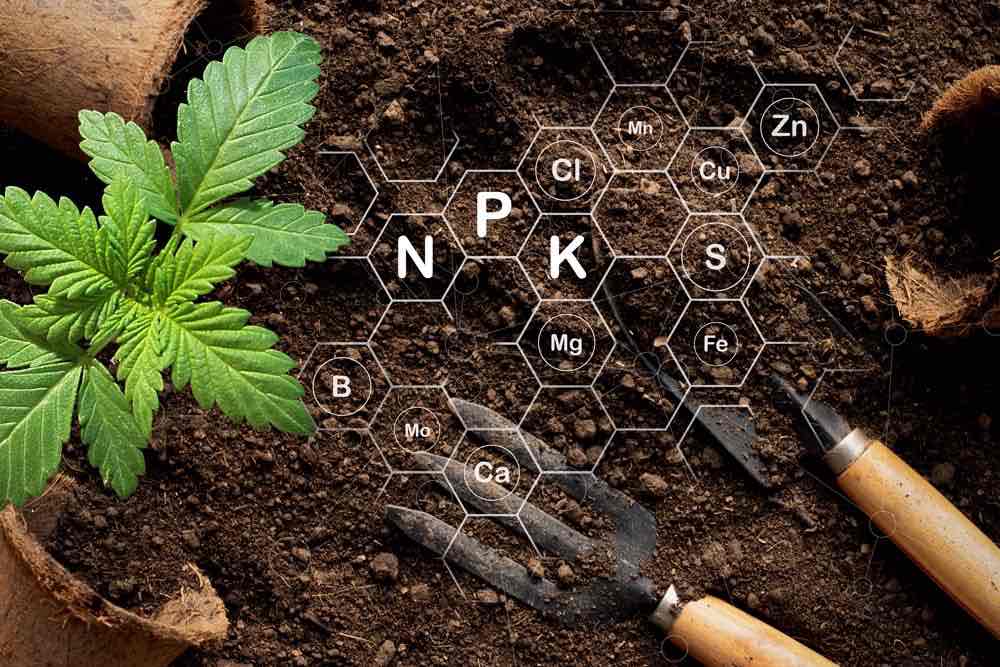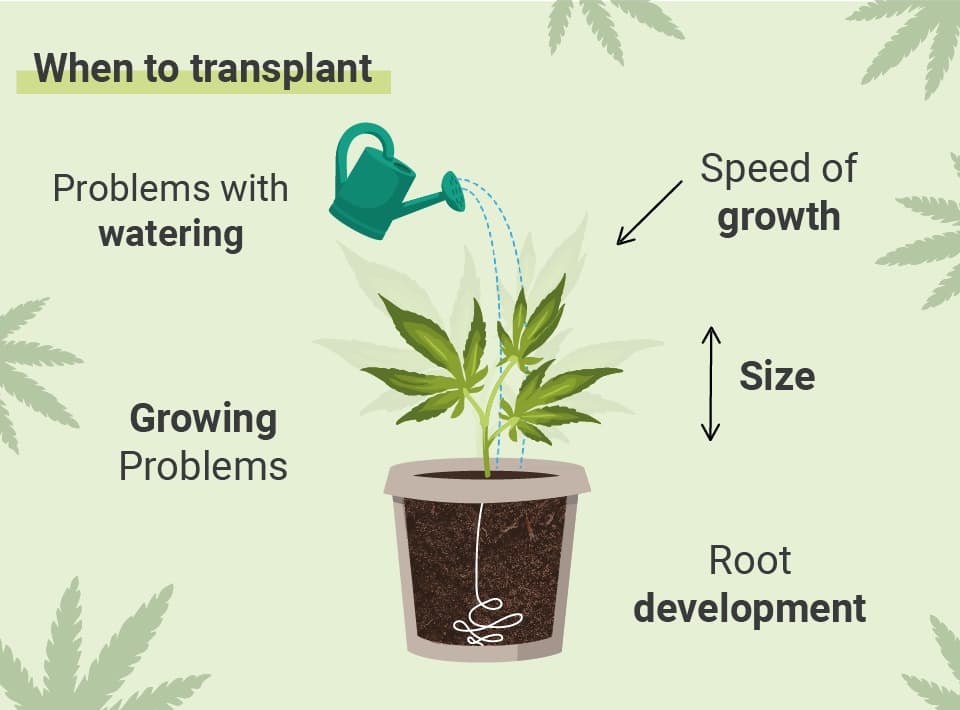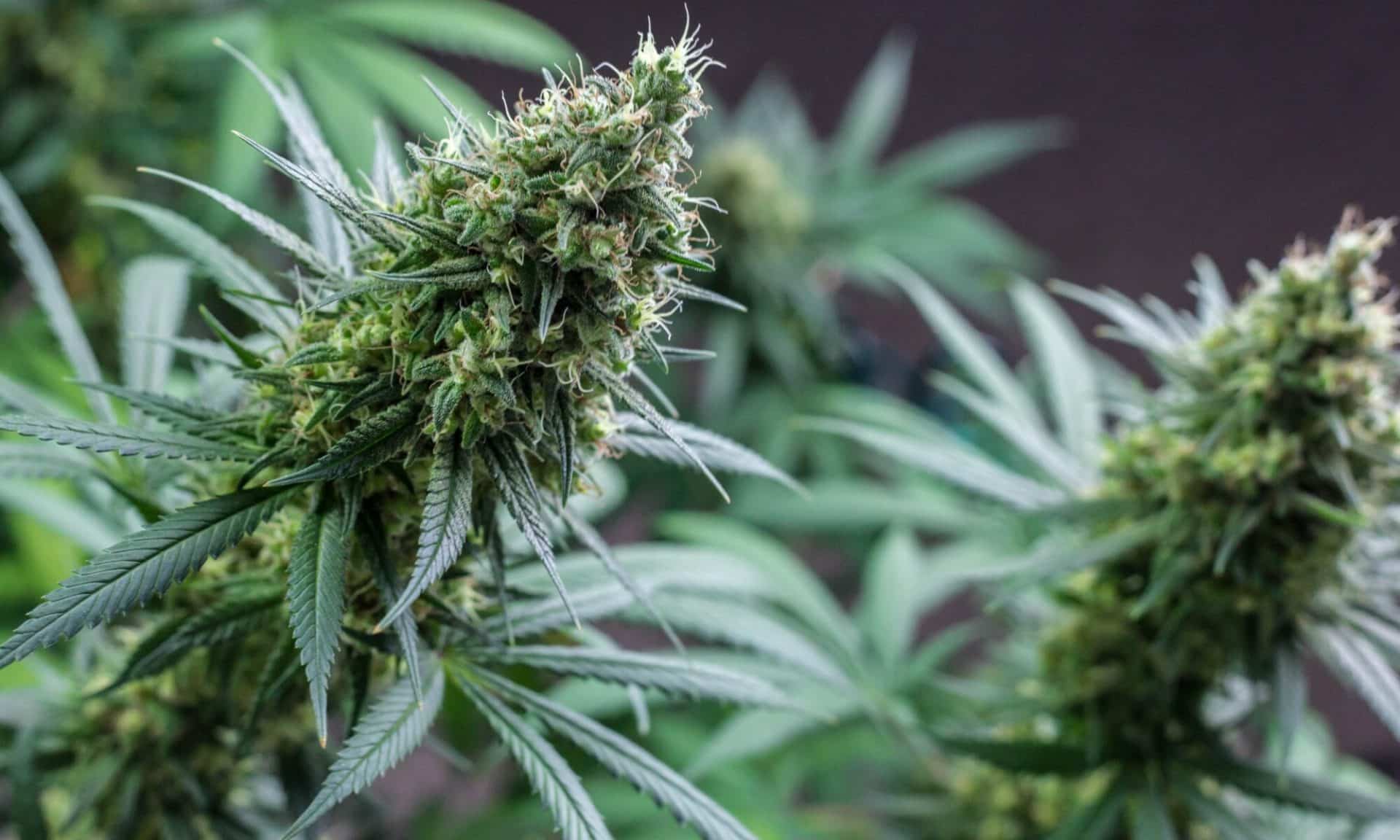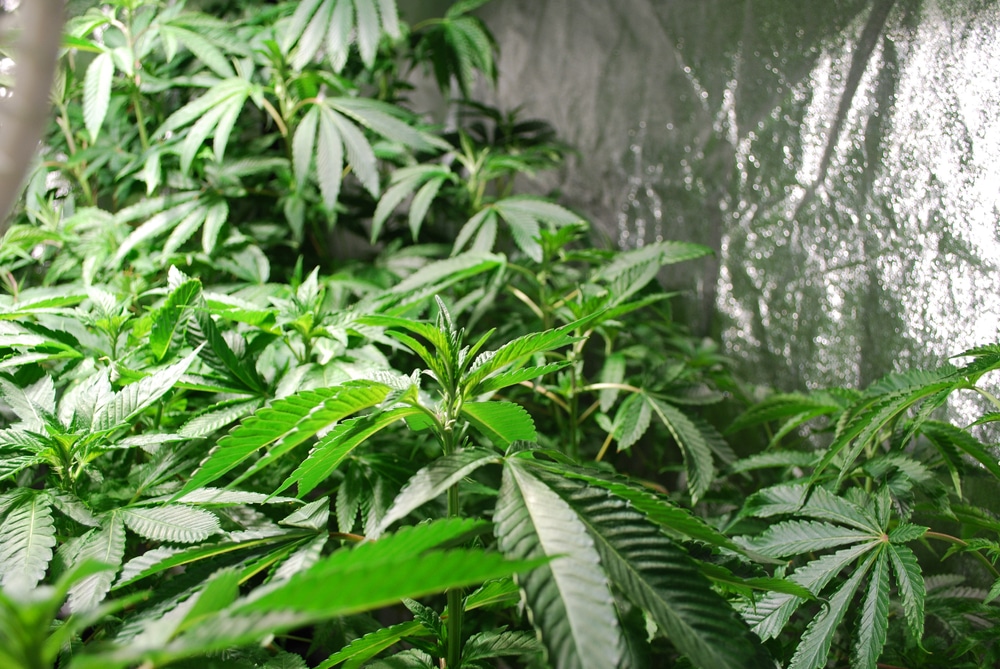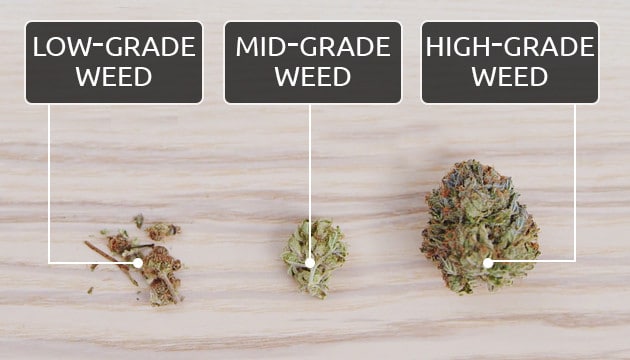No products in the cart.
Marijuana Education
Discovering the Best Nutrients for Your Autoflowering Cannabis Plants
Nutrients are vital for the health and growth of autoflowering cannabis plants. Autoflowers need a balanced mix of essential nutrients to produce good yields. The key nutrients include nitrogen (N), phosphorus (P), and potassium (K). Nitrogen helps the plant grow strong and healthy, phosphorus is important for bud development, and potassium supports photosynthesis and water regulation. Without these nutrients, plants may become weak, produce poor-quality buds, or even die. If your plant lacks nitrogen, its leaves might turn yellow and drop off. A potassium deficiency can cause the leaf edges to curl and brown, harming the plant’s health and yield.
Besides these main nutrients, autoflowers also need secondary nutrients like calcium, magnesium, and sulfur, as well as trace amounts of iron, manganese, zinc, copper, molybdenum, and boron. Calcium strengthens the plant’s cell walls, magnesium is essential for photosynthesis, and sulfur helps with protein production. Deficiencies in these nutrients can cause various problems, such as distorted new growth from a lack of calcium or yellowing between leaf veins due to magnesium deficiency. Proper nutrient management is crucial for ensuring your autoflower plants grow well, produce seeds, and yield high-quality flowers.
Do Autoflowers Require Fewer Nutrients Compared to Photoperiod Plants?
Yes, autoflowers generally need fewer nutrients than photoperiod cannabis plants. This is because they are smaller and have a shorter lifecycle. Autoflowers grow quickly and move from the vegetative stage to the flowering stage faster, often finishing their entire lifecycle in just 8-12 weeks. With a shorter growth period, autoflowers benefit from a simplified feeding schedule. They don’t need the prolonged and often intensive nutrient regime that plants grown from photoperiod seeds require during their extended vegetative and flowering stages.
Can you grow autoflowers without extra feeding?
You can totally grow autoflowers without being their personal chef, especially if you start them off in nutrient-packed soil. These speedy little plants thrive in rich environments, thanks to their fast and furious growth cycle. Just remember, their nutrient needs might change based on the soil, weather, and their own genetic quirks.
Nutrients in the soil
Premium soils are rich in all the necessary elements, particularly nitrogen, which encourages robust and quick growth. Pre-made potting soil typically provides sufficient food for your autoflower seedling during the first three to four weeks. The length of time the plant can develop without adding nutrients varies between strains.
Once autoflowering cannabis plants run out of food, they typically exhibit symptoms of nutritional deficiency. They need you to give them additional minerals if this occurs.
If cultivating a fast-growing autoflower, you should only need to feed it once or twice, as the premium soil should provide all the necessary nutrients.
Using bigger pots for autoflowers and seeds that grow into small plants is advisable, as small mediums won’t have sufficient soil and nutes.
Add all the necessary ingredients yourself if you use a regular soilless mix without additional nutrients. Be wary of time-release nutrients because they sometimes cause more damage than good.
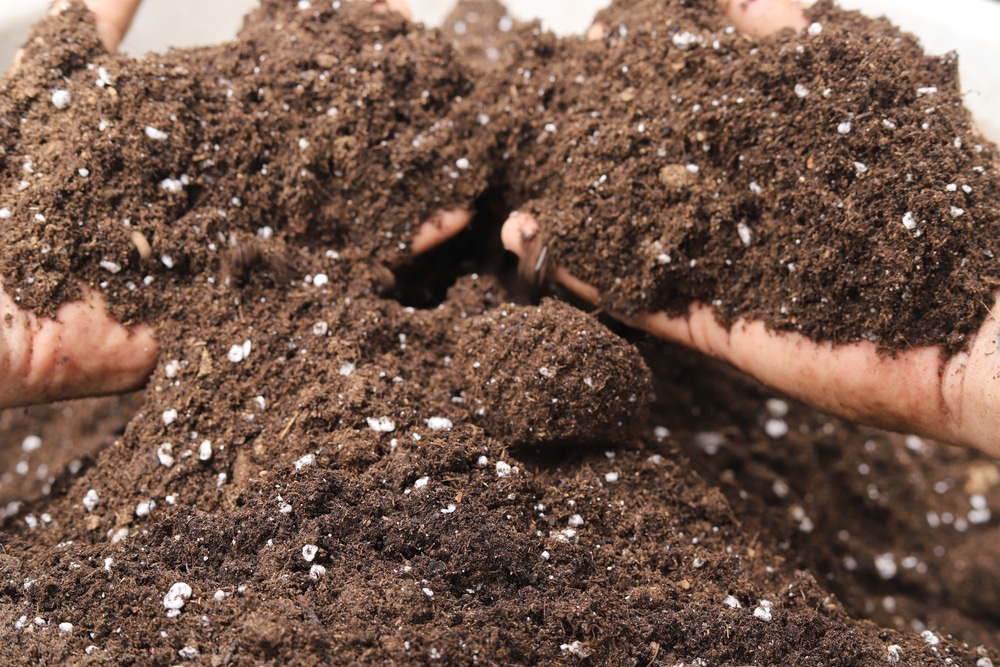
What nutrients do autoflowers need?
All cannabis plants need trace elements of macronutrients and micronutrients for healthy, uninhibited growth.
The three primary macronutrients for your crops are known as N-P-K: Nitrogen (N), phosphorus (P), and potassium (K).
Autos require smaller amounts, but you need to dose them correctly for bountiful harvests.
The N-P-K ratio on most autoflower fertilizer labels indicates how much of each nutrient is inside, and the ideal amounts depend on each growth phase:
- Seedling stage: 2-1-2
- Vegetative phase: 10-5-5
- Flowering stage: 5-10-10 or 5-15-10
Cannabis plants require higher nitrogen and potassium levels during the seedling stage. When flowering, they need lots of nitrogen for vegetative growth and phosphorus.
Calcium, sulfur, and magnesium are also required, along with trace levels of micronutrients like iron, zinc, copper, and manganese.
Here’s a breakdown of the best nutrients for autoflowers;
- Nitrogen: For rapid development and growth.
- Phosphorous: For transmitting energy and enabling complete photosynthesis.
- Potassium: Helps the stomata to retain water.
- Magnesium: Supports chlorophyll’s ability to absorb light and produce sugars.
- Calcium: Essential to the healthy structure of cannabis plants.
- Sulfur: Aids in forming vital amino acids, vitamins, plant proteins, and enzymes.
- Boron: Helps to support cannabis plants’ cell walls. Your plant could collapse without it.
- Copper: Aids with photosynthesis, helping crops to metabolize proteins and carbohydrates properly.
- Zinc: Encourages internodal stretching and the generation of growth hormones.
- Iron: Essential for maintaining the function and structure of chloroplasts.
- Manganese: Necessary for the plant’s ability to absorb nitrogen and aids in photosynthesis, respiration, and reproduction.
- Molybdenum: Required for enzymes that enable plants to mix amino acids.
Organic vs. non-organic
The best organic nutrients for autoflowering cultivation help you to establish and maintain a nutrient-rich environment for essential microorganisms. They’re more natural and promote better, stronger growth. They also aid in the proper absorption of other nutrients in the environment.
This table provides a clear comparison between organic and non-organic nutrients, highlighting the key differences to help growers make informed decisions.
| Organic Nutrients |
Non-Organic (Synthetic) Nutrients
|
|
| Source | Natural sources (compost, manure, bone meal, fish emulsion) |
Chemically manufactured (mineral salts)
|
| Nutrient Release | Slow release as organic matter breaks down |
Quick release, immediately available to plants
|
| Soil Health | Improves soil structure and promotes beneficial microorganisms |
Does not improve soil structure, may degrade soil over time
|
| Environmental Impact | Biodegradable, less likely to cause pollution |
Potential for nutrient runoff and pollution if misused
|
| Application | More frequent application, slower to show results |
Easier control, immediate plant response
|
| Best For | Maintaining natural growing environment, improving soil health |
Precise nutrient control, fast and consistent results
|
Slow-release
Slow-release nutrients come in powder or pellet form and are among the simplest feeding methods because they gradually release essential minerals during watering. Here’s a closer look at how they work and how to use them:
| Nutrient | Role |
Slow-Release Form
|
| Nitrogen (N) | Essential for leaf and stem growth |
Organic compounds, urea-formaldehyde, ammonium sulfate
|
| Phosphorus (P) | Promotes root development and flowering |
Rock phosphate, bone meal, polyphosphates
|
| Potassium (K) | Enhances overall plant vigor and stress resistance |
Sul-Po-Mag, potassium sulfate, greensand
|
| Calcium (Ca) | Strengthens cell walls, aids in nutrient uptake |
Dolomitic lime, gypsum, calcium phosphate
|
| Magnesium (Mg) | Essential component of chlorophyll |
Epsom salts, magnesium oxide
|
| Sulfur (S) | Important for protein synthesis |
Elemental sulfur, gypsum, sulfur-coated urea
|
| Micronutrients | Iron (Fe), Zinc (Zn), Manganese (Mn), Boron (B), Copper (Cu), Molybdenum (Mo) |
Chelated forms, micronized minerals
|
Best nutrients for autoflowers in soil
Give your plants the best possible start by creating or purchasing “super soil,” a mix that provides most or all the nutrients required.
You can make super soil using various ingredients, including:
- Healthy fungus and bacteria.
- Perlite.
- Earthworm castings.
- Compost tea
- Sphagnum.
- Peat.
The grow medium you use impacts how much and how often you feed your autoflowers.
Unlike a hydroponics system, planting in soil typically provides all the vital nutrients, which are usually absorbed differently in each setup.
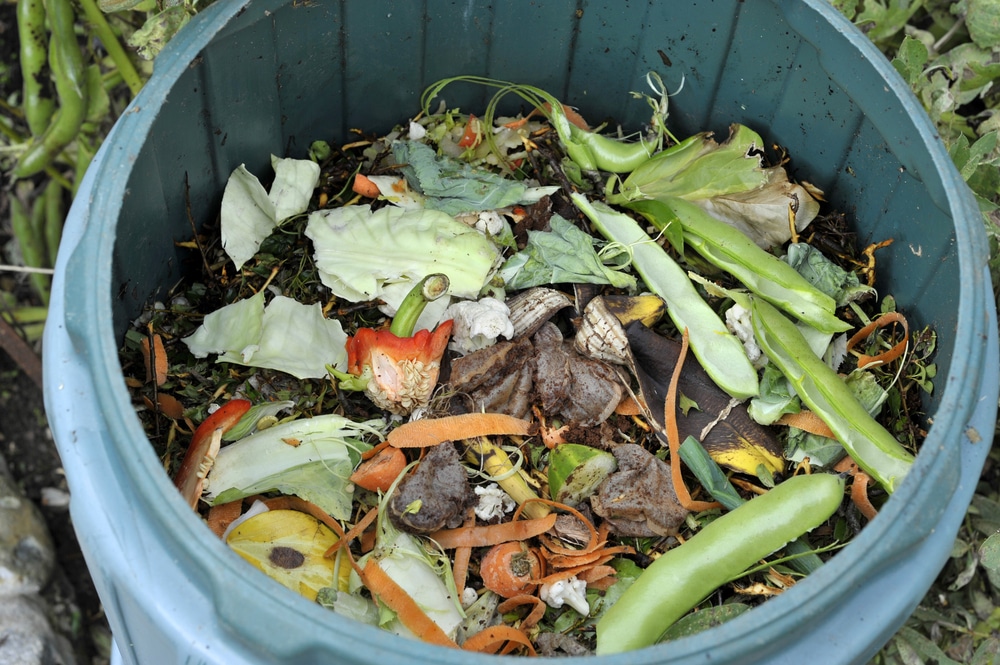
Best nutrient brands for autoflowers
One of the most well-known manufacturers of cannabis fertilizer, FoxFarm, offers a variety of autoflower solutions.
Their Open Sesame and Beastie Bloomz blends are ideal for obtaining a full bloom during the flowering stage.
Other popular nutrient brands include:
- ANNA
- Advanced Nutrients
- Humboldt’s Secret
- Earth Juice
Best hydroponic nutrients for autoflowering cannabis strains
It’s advisable to feed your plant with liquid or synthetic fertilizers if you aren’t growing in soil, as they’re more easily absorbed.
Some of the top fertilizers for hydroponic gardening come from Terra Aquatica. When growing hydroponically, it’s essential to provide magnesium and calcium supplements.
Autoflower nutrient schedule
Most inorganic fertilizers are made for photo-sensitive cannabis plants. It’s critical to only utilize a smaller percentage of the product at a time, unless you’re using specially formulated autoflowering feeds.
A cannabis feeding schedule helps you to manage the plants’ growth cycles and provide the appropriate amount of nutes when required.
It’s crucial to understand when to feed autoflowers. Experienced growers may be accustomed to the requirements of their crops and typically supply half the nutrients.
Beginners must adhere to a tight feeding schedule to adapt to the specific demands of the plants. Follow the general strategy below to ensure you’re feeding your autoflowers properly:
- Germinating cannabis seeds (first 1–5 days): Plain water
- Week 1 (seedling phase): Plain water
- Week 2 (start of vegetation): ⅛ of vegging nutrients
- Week 3 (vegetation): ¼ of vegging nutrients
- Week 4 (vegetation): ¼ to ½ of vegging nutrients
- Week 5 (pre-flowering): ¼ vegging and ⅛ flowering nutrients
- Week 6 (first flowers): ¼ flowering and ⅛ vegging nutrients
- Week 7 (flowering): ½ of flowering nutrients
- Week 8 (flowering): ½ of flowering nutrients
- Week 9 (flowering): ½ of flowering nutrients
- Week 10 (ripening): ⅛ of flowering nutrients
- Week 11 (flushing & harvest): Ph-adjusted plain water until harvest
Use filtered or purified water and appropriate fertilizers that contain the correct micro and macronutrients for autoflowering cannabis.
Give your plants the necessary organic marijuana nutrition according to the feeding schedule listed below:
- Week 1–2: Seedling booster, 8 liters of water, and 0.85 oz. nutrients
- Week 1–4: Growtime, 8 liters of water, and 0.85 oz. nutrients
- Week 1–8: Flowertime, 24 liters of water, and 2.12 oz. nutrients
- Week 6–7: Plant booster, 24 liters of water, and 0.85 oz. nutrients
How many nutrients do I need to use for each growth stage?
Maintain the appropriate nutrient levels for autoflowers at each growth stage by using the best fertilizer.
The N-P-K ratio represents the amount of each nutrient a solution contains. For example, it may indicate the nitrogen, phosphorus, and potassium formula as 16-16-16, or 16% of each.
During the vegging stage, autoflower cannabis plants require extra nitrogen to promote plant growth.
They need additional phosphorus and potassium throughout the flowering stage for improved bud formation.
The seedling phase
A cannabis plant is highly vulnerable during the seedling phase due to its underdeveloped root system.
During the first two weeks, only plain water is necessary. Most nutrients in the seeds and natural atmosphere are usually sufficient, and they can’t absorb additional minerals during this time.
Begin feeding a seedling if it exhibits symptoms of a deficiency. Provide the necessary nutrition every second time you water, ensuring you dilute the strength.
Seedling boosters containing a ratio of 11-40-13 are the best and promote healthy growth in the baby plant. They support strong development and healthy roots, making them the ideal nutrients for autoflowers at this stage.
You won’t need to feed your seedlings additional minerals if you use nutrient-enriched potting soil.
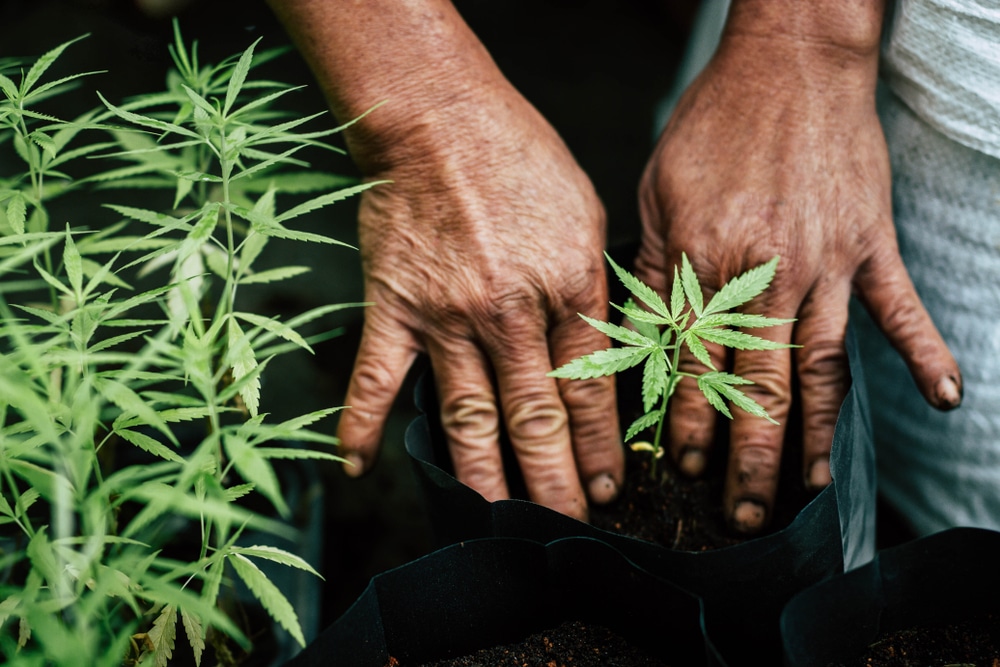
The vegetative stage
Autoflowering plants usually go from the seedling phase straight to the flowering stage, spending little time in vegetation.
When you notice rapid growth, start supplementing your plants’ diet with more nitrogen and moderate amounts of potassium and phosphorus.
Feeding the best nutrients encourages them to form sturdy branches and leaves before pre-flowering. A healthy autoflower starts vegetating after ten days from seed or when the first five finger leaves appear.
It’s recommended to slowly change the nutrient schedules to reduce the chance of stunning or stunting your plants. The ideal macronutrient ratio for the vegetative growth stage is 19-5-20 to promote strong root performance, greater nutrient uptake, and increased microbial activity.
Commercialized fertilizer typically contains the trace elements and secondary nutrients that autoflowers require during the vegetative stage.
You can combine bloom and grow nutrients while approaching the flowering stage to generate a balanced mixture during the transition.
The pre-flowering stage
The pre-flowering stage is characterized by rapid growth as the autoflowering cannabis plant starts to produce pistils.
This phase is unique for autoflowers because they don’t rely on a significant light cycle change. It lasts approximately one to two weeks and is typically lighter than it is for photoperiods.
Some autoflower cultivators continue to use vegetative nutrients for the initial weeks of blossoming. Early in this phase, extra nitrogen additions can promote lively development, but too much may cause the plant to produce excessive leaves.
Watch for early yellowing, indicating that you need to increase the dosage. During this stage, a boost in phosphorus can also aid in accelerating the development of flowers.
The flowering phase
You can lower nitrogen levels as an autoflower matures and blooms. Change the schedule to provide more potassium and phosphorus.
Providing proper cannabis bloom nutrients can significantly boost autoflower yields. Ensure you feed your plants plenty of phosphorus for bud production. It also helps to avoid the risk of producing meager harvests.
PK 13-14 is an excellent product for supplementing potassium and phosphorous. Ensure the feeding solution contains some nitrogen because it’s still vital.
Start dropping the supplied nutrients earlier or later, depending on how heavily you decide to feed your autoflower. Consider letting the buds grow without food for a day or two before harvest.
Autoflowering nutrient tips
Cultivation is a learned art, and practice goes a long way in ensuring abundant, healthy yields. Below are a few extra tips to guide you when providing plant nutrients for autoflowers.
Purchase high-quality nutrients
Purchase high-quality nutrients from trustworthy manufacturers with a track record of effectiveness. Don’t let the feeding regimens dupe you, as the labels may exaggerate the dosages in the fertilizers.
Follow our schedules above as a rough guide, and pay attention to your plants to understand what they need.
Calcium & magnesium
Providing Cal-Mag supplements is recommended if you aren’t growing your plants in soil. Calcium and magnesium are essential secondary macronutrients for optimal cannabis growth but can easily wash away in soilless growing mediums.
You can increase them with your feeding schedule during the vegetative stage and decrease them during flowering.
Mix one nutrient at a time
Add each component to the water individually when adding supplements or making nutrient solutions to ensure they dissolve evenly.
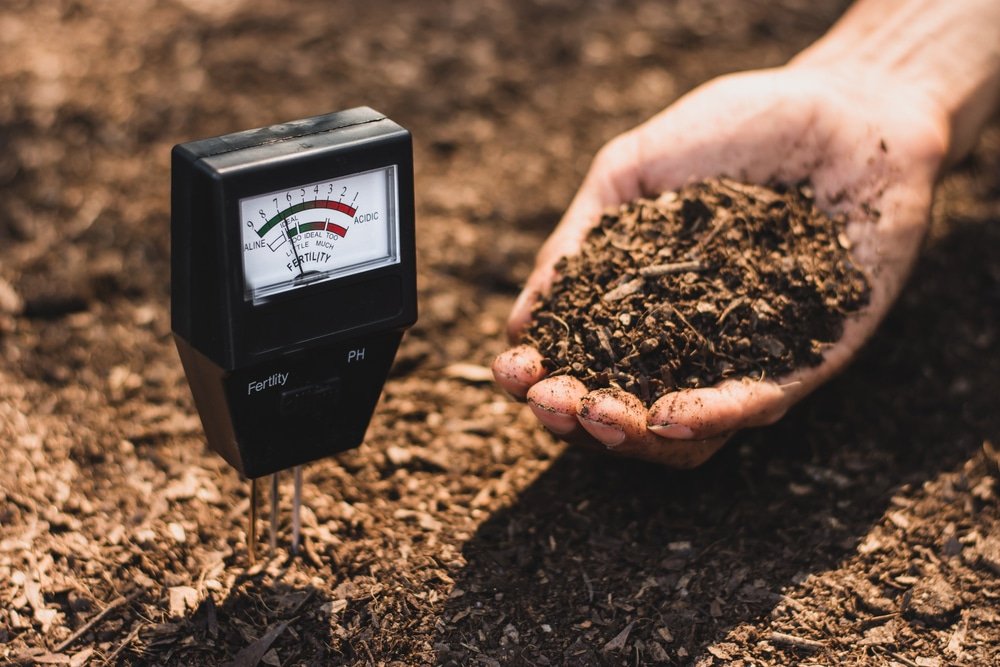
Check the pH of the nutrient solution
After pouring the autoflower nutrients into water, let the mixture sit for 10–15 minutes before measuring the pH.
Water’s pH tends to drop when adding fertilizer, making it more acidic. Even if you’re using the best nutrients, your plants won’t be able to absorb them properly if the pH exceeds the recommended range.
Plants don’t take in all minerals in the same way, but maintaining the correct pH between feedings can benefit nutrient uptake.
Use an EC meter
An EC/TDS meter can assist you in determining if your nutrient solution is too powerful for your autoflowering cannabis crops.
The best nutrients include a feeding chart that shows the concentration of salts and minerals as parts per million. Remember that these levels also depend on the strains you’re growing and the cannabis growth stage you’re at.
Select nutrients appropriate for your growing medium
Natural fertilizers work particularly well in soil because of their delayed release and less residue left behind.
Liquid or synthetic fertilizer is ideal for hydroponic marijuana growing systems and other soilless mediums. These nutrient forms don’t have a substrate to bind to, so they’re more readily available for the plants.
Give water at room temperature
Ensure the feeding solution is 71–75°F before watering to prevent stunning your plants. Fluctuating temperatures that vary beyond comfortable levels also affect the pH.
Flush in the event of nutrient burn
Overfeeding damages autoflowers, but a short flush can help clear any salt build-up at the roots.
Some growers develop flushes once or twice during the growing cycle, even if there are no nutritional issues. Even if a thorough flush isn’t required, giving water intermittently between feedings can prevent nutrient burn.
Best organic nutrients for autoflowers
Are you looking for strategies to produce tastier and more fragrant plants? Organic nutrients can promote sustainability and significantly enhance your crops.
Besides the numerous advantages for your plants, they promote sustainable marijuana cultivation. Synthetic nutrients may not be ideal and could cause deficiencies.
Feed organic nutes to your autoflower cannabis plants to prevent them from lacking the necessary minerals.
Below are the top organic nutrients.
Organic Seedling Booster
These seedling boosters are the best organic nutrition for autoflowers. The main goal at this phase is promoting healthy root growth without overwhelming the baby plants.
The Organic Seedling Booster aids in solid growth and stable root formation.
The N-P-K ratio is 2-5-2 and contains:
- Calcium carbonate
- Soy protein hydrolysate
- Rock phosphate
- Kelp extracts
- Magnesium sulfate
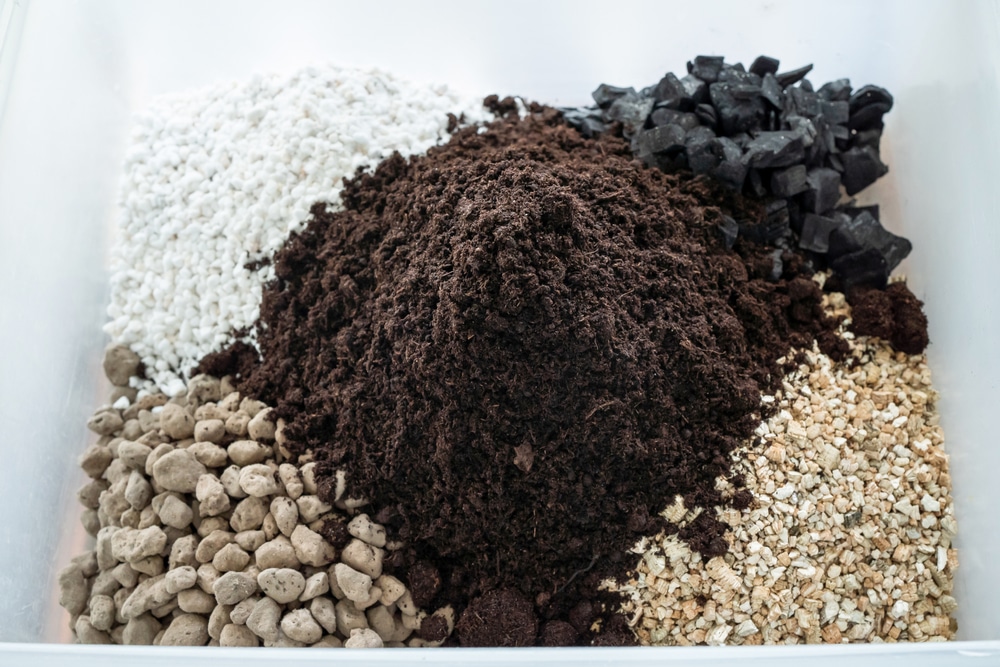
Organic Growtime Fertilizer
Well-balanced micro and macronutrients enable autoflowers to attain their full potential.
The plants start stretching during vegetation, so nutrients provide the support they need. The Organic Growtime Fertilizers’ 9-1-7 N-P-K ratio promotes healthy mineral uptake sourced from:
- Manganese sulfate
- Copper sulfate
- Soy protein hydrolysate
- Rock phosphate
- Potassium sulfate
- Zinc sulfate
- Sodium borate
- Ferrous sulfate
- Magnesium sulfate
- Kelp extract
Organic Flowertime Fertilizer
When your plants start blooming, provide Organic Flowertime Fertilizer to help increase bud production. This product contains the best nutrients for autoflowers to boost the size of the nugs via an N-P-K ratio of 6-2-12.
The ingredients in this product are:
- Rock phosphate
- Magnesium sulfate
- Zinc sulfate
- Sodium borate
- Kelp extract
- Potassium chloride
- Potassium sulfate
- Copper sulfate
- Soy protein hydrolysate
- Ferrous sulfate
- Manganese sulfate
Organic Plant Booster
The Organic Plant Booster is excellent for fast-growing autoflowering plants. It adds extra nutritional value to ensure bigger colas, fatter buds, and more resilient, hardy growth.
The product helps autos to fortify their roots, retain nitrogen, and encourage abundant flowering thanks to its NPK ratio of 0-13-15.
It contains the best organic nutrients blended by:
- Rock phosphate
- Potassium sulfate
- Kelp extract
Nutrient overfeeding
Some cannabis plants are more sensitive than others. Overfeeding is the result of a too-strong solution. More minerals don’t lead to more growth but may result in nutrient burn.
Feeding your plants without measuring the nutes going into your solution could result in toxicity symptoms. Overfeeding symptoms include yellow spots or yellowing on the leaves, which can become more severe if left untreated. If you keep providing a strong solution, the leaves will start to brown, become crispy, and die.
It also causes stress in the plant, leading to stunted growth, lower yields, and death.
Overfeeding is common among beginner and medium-level autoflower growers, so don’t stress if it happens to you. It’s always possible to fix most issues and still get healthy, abundant harvests.
If you notice any signs, flush immediately, give the plant a chance to recover over a couple of days, then resume feeding with lower doses.
You may also begin feeding your cannabis plant a small amount of the best nutrient brand and gradually increasing it.
Nutrient underfeeding
Underfeeding isn’t as severe as overfeeding, as cannabis plants are naturally equipped to survive and grow correctly with few essential nutrients.
A malnourished plant typically appears tiny, pale green in color, and sickly.
If your autoflowering plant exhibits stunted growth and only produces thin stems and pale leaves, it may lack natural food.
Giving an underfed plant a small fertilizer dose and a mild nutrient solution will efficiently and quickly solve the problem.
Flushing and when to stop feeding
Flushing entails removing excess nutrients from the roots and growing medium around one to three weeks before harvest.
Cannabis plants absorb nutrients to thrive, and this process can result in nutrient build-up. While this is more likely to happen with synthetic nutrients, it can also occur with organic ones.
Failure to flush adequately can affect your buds, resulting in weaker aromas and a harsher inhale when you smoke them.
Using flushing products from grow shops or plain water is advisable. This activity makes your buds’ flavor and aroma more prominent and your smoke smoother.
Nutrients: Autoflowering vs. photoperiods
Like photoperiod plants, autoflowers can benefit from bottled or liquid fertilizers for soil or hydroponics.
Even though many brands recommend vast quantities, you hardly need to add commercial fertilizers and nutrients at full potency. Autoflowering plants require significantly less than photoperiods.
It’s important to note that the ideal pH for optimal nutrient uptake in autoflowering plants is similar for those with a photoperiodic cycle. It also varies depending on the growth stage and the strain you’re growing.
Disadvantages of an autoflowering cannabis plant
As with anything, there may be some disadvantages to growing autoflowers, but it depends on your preferences and cultivation goals.
Below are some downsides of autos.
You can’t clone them
You can’t clone auto strains due to their built-in timer. Cuttings follow the same timetable as the mother plant, so clones won’t have enough time to develop before flowering begins.
Making clones won’t be necessary, as the short life cycle lets you move from seed to harvest at the same rate it would take you in a cloning schedule.
You can’t use high-stress training
High-Stress Training Techniques (HST) can achieve remarkable outcomes with photoperiod strains. Schwazzing, monster and super cropping, fimming, and topping have all gained popularity in recent years, but you should avoid them with autoflowers.
Autos don’t have enough time to recover from stress, so adopting these plant training techniques with them can cause reduced yields and lower potency.
Stick to Low-Stress Training (LST) methods to get the best results with autoflowering cannabis plants. Scrogging (implementing a Screen of Green setup) combined with a tie-down technique can increase your final yield’s weight by up to 25%.
Nute your way to successful autoflower harvests
All plants are unique, and you should approach autoflower feeding with care. Follow an appropriate nutrient schedule and teach yourself about your crop’s needs to nourish them more effectively.
Your cannabis plants will produce incredible results with the proper application and high-quality nutrients.
The amount of water and nutes an autoflower needs vary depending on air circulation, growing media, temperature, humidity, and genetics.
Spending time with your plants and paying attention to tiny details can mean the difference between mediocre and abundant crops.
Visit us at The Seed Fair to buy autoflower seeds and other cannabis products that suit your needs.
We offer over 1000 premium strains to help you start your cultivation journey, and we also have a blog with many informative resources.


